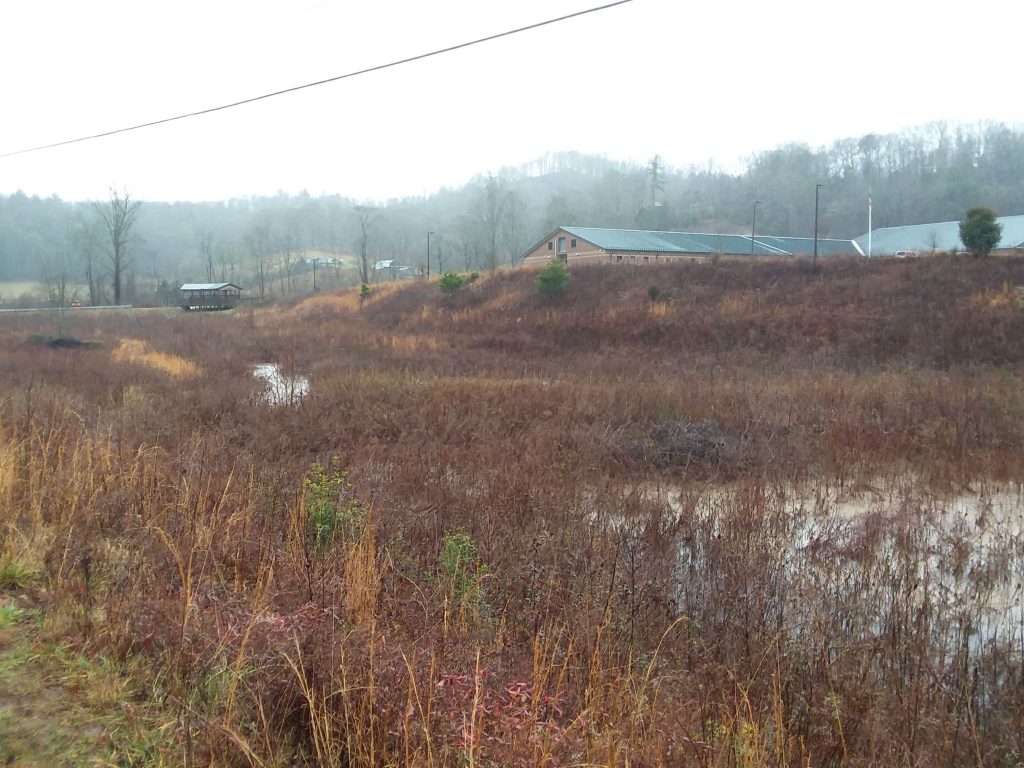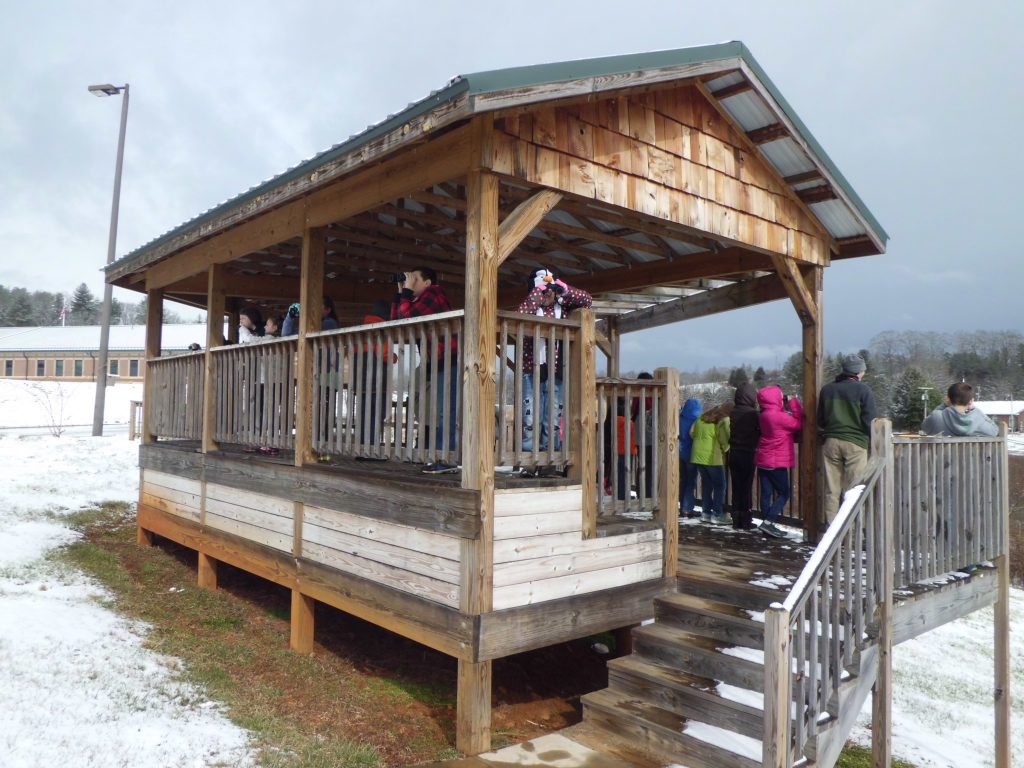
Cove Branch Outdoor Classroom: A Living Laboratory for Restoration and Education
Cove Branch is a small stream in Macon County that flows out of the forests, fields, and small homesteads into the Cullasaja River, a tributary of the Little Tennessee River. Just before the stream joins the river, it passes along the border of two public schools—Mountain View Intermediate and Macon Middle School—each serving over 650 students. When Mountain View Intermediate School opened in 2009, a group of teachers and community members saw potential in the stream and surrounding property as an outdoor classroom for science and environmental learning.
In 2011, teachers and administrators from Mountain View Intermediate School partnered with the Macon Soil and Water Conservation District, Macon County Schools, Coweeta Long-Term Ecological Research Program, Macon County Commissioners, and local community members to secure funding for the construction of a covered pavilion and the development of a schoolyard laboratory along Cove Branch.

By 2012, Macon County Schools completed construction of an outdoor classroom adjacent to the stream. The site could host up to 50 students and teachers and served as a foundation for meaningful environmental education experiences. Funding for the build was granted with the understanding that the stream and its buffer zone would be used for long-term educational and ecological purposes.
However, one major limitation quickly became apparent: the condition of the stream channel itself. Years of school construction, periodic flooding from the Cullasaja River, and additional runoff from new parking lots, playgrounds, and rooftops had created a deeply incised stream channel. The water level dropped 3 to 5 feet below the surrounding floodplain, making safe and effective access for student learning nearly impossible.
In response, educators and school officials partnered once again with the Macon County Soil and Water Conservation District and successfully secured Clean Water Trust Fund grants to restore the stream, enhance access, and establish diverse ecological habitats. Unfortunately, planned construction of a nearby turning lane halted the project. During the three-year delay, the secured funding was reallocated.
Despite the setback, nature began to quietly reclaim the space. Native trees such as silky dogwood, river alder, and sycamore returned, while goldenrod, blackberry, and river cane blanketed the floodplain. The site transformed into a vibrant, natural habitat. Teachers embraced the changes and began using the space once again—for bird counts, insect life cycle studies, seed dispersal lessons, and wildlife tracking. Fifth graders participated in Muddy Sneakers expeditions, and middle school students explored the stream corridor in science classes.
Then, in April 2018, the site was bush-hogged up to the streambank due to concerns over its “unkempt” appearance and potential safety risks. The action sparked backlash from students, teachers, and community members who recognized the ecological value of the space. Their response made it clear that a renewed, intentional plan was needed—one that balanced restoration with education and community expectations.
Out of that moment grew a new and powerful partnership. Macon County Schools joined forces with Macon County Soil and Water, the Coweeta Long-Term Ecological Research Program, Mainspring Conservation Trust, Penland Construction, Winding Stair Nursery, Duke Energy, U.S. Fish and Wildlife, Highlands Biological Station, and members of the school and broader community to reignite the vision of the Cove Branch Outdoor Classroom.
Beginning in June 2024, Macon County Schools will work with Forest Stewards, a nonprofit affiliated with Western Carolina University, to implement a full-scale restoration plan. Through this partnership, student interns and trained professionals will remove invasive plant species such as Bradford pear and multiflora rose. Licensed herbicide applications—safe for water and public spaces—will be used to prevent regrowth, and beneficial native plants will be protected. In the fall, the team will return to plant native trees and vegetation.
The final phase of the project includes installing a split rail fence, educational signage, and a walking trail that allows safe, structured access to the stream for students and teachers.
A key goal of this initiative is community education. The design of the restored site will balance wild, ecologically rich areas with maintained spaces to demonstrate that native plants and stream buffers can be both functional and beautiful. The site will become a place for students, educators, and the public to explore how healthy ecosystems protect water quality, support biodiversity, and enhance outdoor learning.
This is a long-term investment in Research, Restoration, and Education.
For project updates, please check the Project Updates section.
If you would like more information, please contact:
Jennifer Love – Director of STEM and Edventure Program, Macon County Schools
